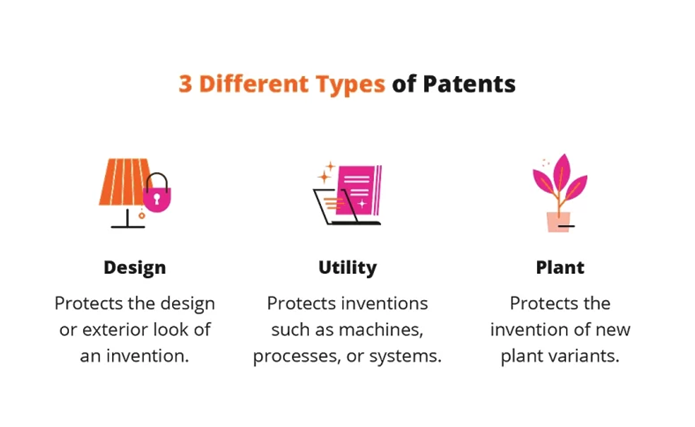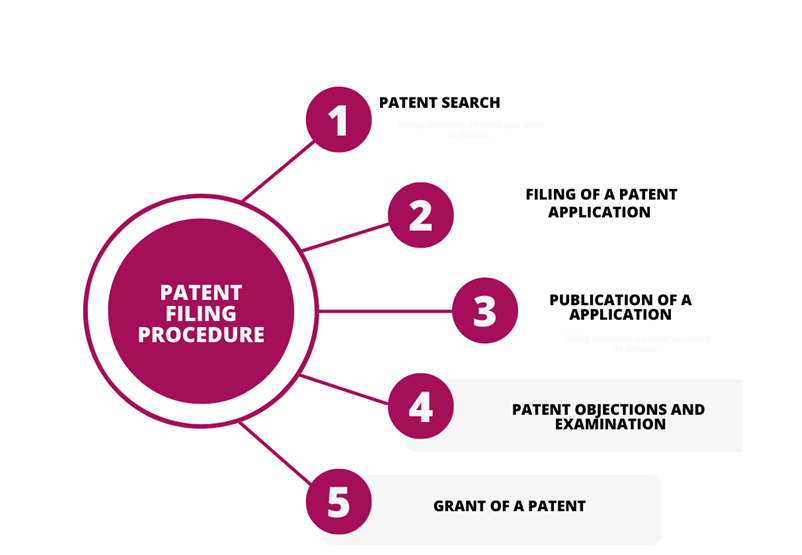


What is a Novelty Search Meaning? A Novelty Search meaning ensures a deliberate search for originality, steering away from habitual or routine patterns. A novelty search and patentability search are important steps before filing a patent application. They help assess if an invention is truly new and worthy of patent protection.
A novelty search looks broadly for solutions or ideas that are not found in regular prior art searches. The goal is to uncover if there are new, unconventional possibilities beyond typical existing patents and technologies. This helps show an invention is non-obvious.
All you Need to Know About Novelty Search Meaning While Filing a Patent
Novelty Search Meaning also known as patentability search is more focused on finding patents and technologies directly related to the invention. The aim is to analyze the prior art landscape to evaluate if an invention is novel and inventive enough compared to what already exists.
Both novelty and patentability searches allow:
- Drafting higher quality patent claims by understanding previous solutions.
- Avoiding spending money on applications likely to be rejected.
- Fulfilling the duty to disclose known prior art to patent offices.
- Assessing if pursuing a patent is worthwhile based on the existing art.
- Building a stronger legal position by preemptively finding the most relevant art.
In this article, we will look at common terms related to novelty search meaning and understand the benefits that a patent lawyer may find from conducting a novelty search.
What is Prior Art?



Prior art refers to any evidence that your invention may already be known or is simply obvious. It includes all the technological information and knowledge that exists before the filing date of a patent application, usually up to 18 months.
Prior art mainly includes previous patents, published patent applications, academic publications, product manuals, and public disclosures. It also encompasses uncodified information, like trade secrets and commercial knowhow, that could be known to a patent lawyer or experts in the same field.
The patent office undertakes a prior art search to evaluate if an invention satisfies the novelty and nonobviousness requirements for patentability. They may search patent databases and conduct a literature search to find closely matching ideas to your claims. Examiners combine their expert knowledge to determine if your invention is a non-obvious variation over known prior art.
To pass this examination, your claims must demonstrate a significant innovative leap over the well-established prior art references. Having a comprehensive understanding of relevant prior art is crucial for drafting strong patent claims that can withstand invalidity challenges. This is where novelty searching complements traditional prior art searching to strengthen patents.
What are the Different Types of Patents?



Here are the main types of patent documents that you can file.
| Patent Type | Description |
| Utility Patent | Protects the functional aspects of an invention. This is the most common patent type covering the functional features of a process, machine, manufacture, or composition of matter. |
| Design Patent | Protects the ornamental design or aesthetic appearance of an article of manufacture. The design must be novel and non-obvious. |
| Plant Patent | Protects new varieties of asexually reproduced plants. The plant must be asexually reproducible, different from previous varieties, and not an obvious product of breeding. |
| Provisional Patent | A simplified application that establishes an early filing date and starts the patent pending status. It lasts for one year before requiring conversion to a non-provisional patent application. |
| Software/Business Method Patent | Protects innovations in software, algorithms, and business methods when implemented on a computer and meeting all patentability requirements. |
| Improvement Patent | Issued for enhancements and incremental upgrades to existing patented products and technologies. |
| International Patent | Provides protection for an invention in multiple countries. This is not a separate type of patent but refers to securing patents nationally in different countries. |
The majority of patents filed are utility patents because they confer the strongest level of protection for functional inventions with practical applications. Other types serve more specialised situations.
What is the Purpose of a Patentability Search ?
A patentability search is performed to evaluate if an invention meets the requirements for patent protection. It involves uncovering previous patents and innovations (prior art) that are related to the new invention.
The main goals are to:
- Assess if the invention is truly novel and non-obvious compared to existing solutions. This provides an indication of the chances of getting a patent granted.
- Allow drafting higher quality patent claims that focus on the novel features based on the prior art analysis.
- Satisfy the applicant’s duty to disclose known prior art to the patent office.
- Avoid spending time and money on a patent application likely to be rejected.
- Help make informed decisions about pursuing patent protection early.
- Build a stronger legal position by preemptively disclosing the most relevant prior art.
Also Read: How to Patent an Idea in the USA
Who is a Patent Examiner and Patent Attorney?
Understanding the novelty search meaning fosters a mindset that values exploration and innovation above conformity. A patent examiner is a government official who reviews and evaluates patent applications to determine if an invention meets the requirements for patentability. They are typically experts with advanced technical degrees and work for the United States Patent and Trademark Office (USPTO).
The examiner conducts a search of prior art, reviews patent claims, and decides whether the invention described in the application is truly novel, useful, non-obvious, and clearly disclosed. Based on their examination, they either approve or reject the patent application claims.
If claims are rejected, the examiner issues an office action with the legal rationale. Patent attorneys, who are specialists in patent law and prosecution, then respond by arguing against the rejections and amending claims to overcome objections while still protecting the invention.
What Are the Steps to Take Before You File Your Patent Application?
The concept of novelty search meaning encourages individuals to push beyond boundaries to uncover innovative insights. Taking the right steps before filing a patent application makes the process smoother and improves your odds of success. Here are some key pre-filing steps:
- Conduct a novelty search – Uncover non-obvious solutions and gauge patentability upfront.
- Review prior art – Thoroughly understand the current landscape surrounding your concept. Look for patent databases, research papers, and products.
- Document invention process – Keep detailed notes, sketches, logs of development work to establish invention timeline.
- Seek professional advice – Consult a patent attorney to assist with search, analysis, and planning.
- Draft a provisional application – File a provisional application to secure an early priority date before finalizing the utility application.
- Develop prototypes and data – Build working models and gather testing data to support claims and demonstrate enablement.
- Write a patentability assessment – Analyze how your invention differs from and improves upon the closest prior art.
- Craft broad claims – Explore variations to draft claims that cover a wide scope of protection.
Laying this groundwork before filing establishes the novelty and strengthens the entire application. This smooths the examination process and improves the odds of winning a granted patent.
You can also make a better patent application by including patent drawings.
How to File a Patent Application After a Novelty Search is Conducted?



Here are the key steps to get a patent after conducting a novelty search:
Analyze the results – Review the novelty search findings to identify promising solutions with patent potential. Assess their feasibility and commercial viability.
Determine scope of protection – Decide the breadth of patent coverage needed based on the novelty search insights.
Draft the application – Use a patent attorney to write the application, incorporating the novel concepts revealed in the search. Focus on broad claims supported by the novelty evidence.
File provisional application – Submit a provisional patent application to secure initial filing date and test concepts.
Build prototypes – Develop working prototypes and collect data to support claims in the non-provisional application.
Submit non-provisional application – File the complete utility patent application within 1 year of the provisional, including all claims, abstract, specifications, drawings, declaration, and filing fees.
Work with examiner – Respond to any office actions received during examination to argue against rejections and get claims allowed.
Get claims allowed – Secure a Notice of Allowance once all claims are approved by addressing examiner objections.
Pay issue fees – Pay required USPTO fees to progress the application to granting.
Patent granted – Receive official granted patent after passing examination and issuance process.
The key is using the novelty search insights to build the strongest case for non-obviousness and maximise claim breadth in the application. This smooths prosecution towards allowance.
Want to Learn more about filing your own patent?
Dive into this article – How to File a Design Patent on Your Own in 2023?
Obtain a Patent Easily With RightPatents Novelty Search Solutions



Novelty search meaning underscores the significance of exploring uncharted territories to discover fresh perspectives. RightPatents leverages cutting-edge AI and expert analysts to deliver unparalleled novelty and patentability searches. Their comprehensive reports uncover non-obvious prior art, allowing you to craft novel patent claims for smooth prosecution. With global access and tailored solutions, RightPatents empowers inventors to obtain quality patents with confidence. Partner with RightPatents today for novelty searches that set your innovation apart.
Frequently Asked Questions
Q: What is the meaning of novelty search?
Ans: A novelty search, also known as a patentability search, is a type of search performed to determine if an invention is new and inventive enough to be patented. It involves assessing the invention's novelty and non-obviousness compared to existing prior art patents and other literature.
Q: Is it important to conduct a novelty search before filing a patent application?
Ans: Yes, conducting a novelty search before filing a patent application is important to assess the likelihood of obtaining a patent. It helps the inventor understand the existing prior art and make informed decisions about pursuing patent protection for their invention.
Q: What are the search results of a novelty search used for?
Ans: The search results of a novelty search are used to understand the scope of patent protection that may be available for the invention. It also helps in assessing the value of the patent and determining the potential obstacles in the patent process.
Q: How to conduct a Patent Search?
Ans: Here are the key steps to conduct an effective patent search on your own.
1.Identify keywords
2.search patent databases
3.Review results
4.Analyze details
5.Follow citations
6.Consult Patent attorneys
7.Document Results
Q: Can an inventor file a patent without conducting a novelty search?
Ans: While it is possible for an inventor to file a patent without conducting a novelty search, it is generally recommended to perform the search to make an informed decision about pursuing patent protection.
Q: What happens if prior art is found during the novelty search?
Ans: If prior art patents or relevant literature are found during the novelty search, the inventor may need to evaluate the impact of the prior art on the patentability of their invention. It could affect the scope of the patent or the likelihood of being granted a patent.
Q: Is a novelty search a guarantee of obtaining a patent?
Ans: No, conducting a novelty search is not a guarantee of obtaining a patent. It provides valuable information about the patentability of the invention, but the decision to grant a patent ultimately depends on the patent examination process.
Q: Why is it important to conduct a novelty search before filing a patent?
Ans: Conducting a novelty search before filing a patent application helps the inventor make an informed decision about the likelihood of obtaining a patent. It allows them to assess the risks and benefits associated with pursuing patent protection for their invention.
Q: Can a novelty search be used to assess the patent value of an invention?
Ans: Yes, a novelty search can be used to assess the patent value of an invention by analysing the relevance and strength of the prior art found during the search. It helps in understanding the competitive landscape and the potential market value of the patent.
Q: When is a novelty search typically performed in the patent process?
Ans: A novelty search is typically performed before filing a patent application. It is an essential step in the patent process to evaluate the patentability of the invention and make well-informed decisions before proceeding with the patent filing.

